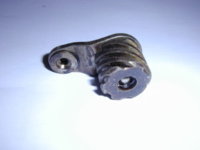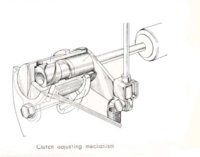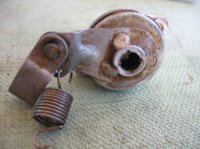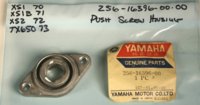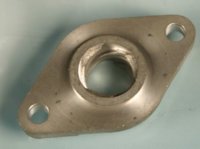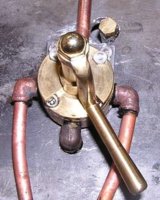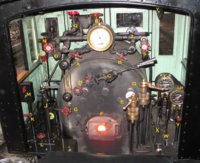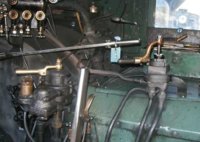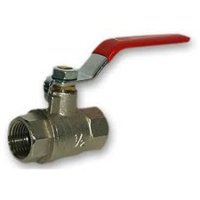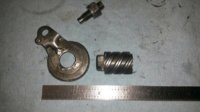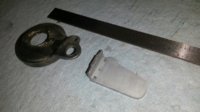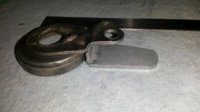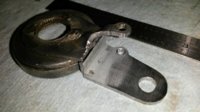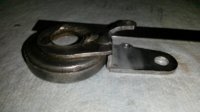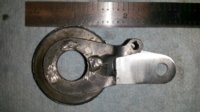...It might be interesting to look to see how other bike manufactures have solved this problem of mechanically operating the clutch...
Here's a pic of the non-plastic pot-metal style used on many early Hondas. Adjustment from the outside. Simply loosen the clamp, use a coin to adjust the housing, tighten.
... I threw up a youtube video of my clutch worm mechanism installation back in September . I found that I couldn't even tighten my worm gear fixing screws at all without the arm becoming too stiff to operate. I thought at first it was a hydraulic effect of too much grease but from what 5twins has said it looks like the fixings are distorting the body somehow.
I'll need to find a cure pdq as the bike is nearly ready to use and the worm drive is still only finger tight.
Excuse the hyjack twomany but I thought this problem was sort of relevant and could effect other owners
Not a hijack, quite relevant! In your pic, your worm drive is in much better shape than the junker I'm experimenting with.
Might I suggest that you first find which of the two orientations gives the best feel, then mark the mount ears 'top' and 'bot' for later reference.
Then, you could bend the arm down a little further out than I did mine, away from the delicate seal cover. Let the bent arm droop down, say at a 45° angle. It doesn't need to be horizontal. Just get it as low as possible without rubbing on the cover's reinforcing rib. You'll probably need to use the outer hole (if you have one) so that the lever hole to rotational axis is about 1.4"-1.5".
Lastly, pack it well with grease! I use a lighter viscosity teflon grease (in previous pic). Don't run it dry.
And you can snug the screws down a little, the binding and 'hydraulic' feel will be insignificant when exposed to 100+ lb cable tension and 300-400 lb pushrod force...

